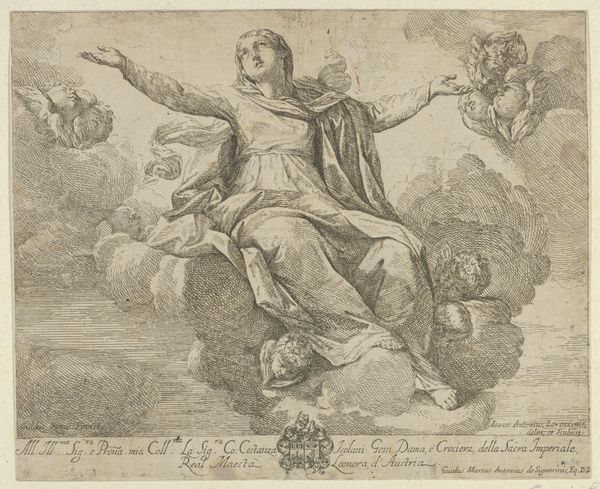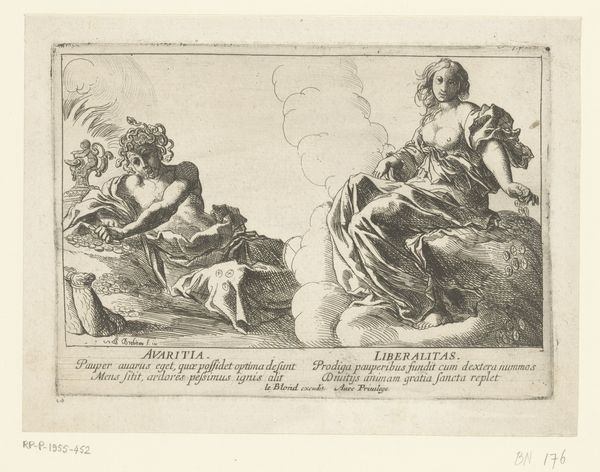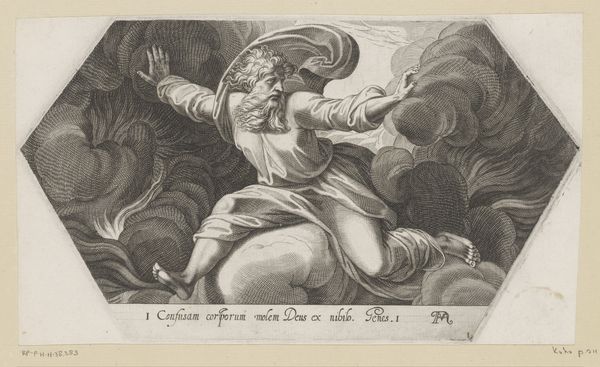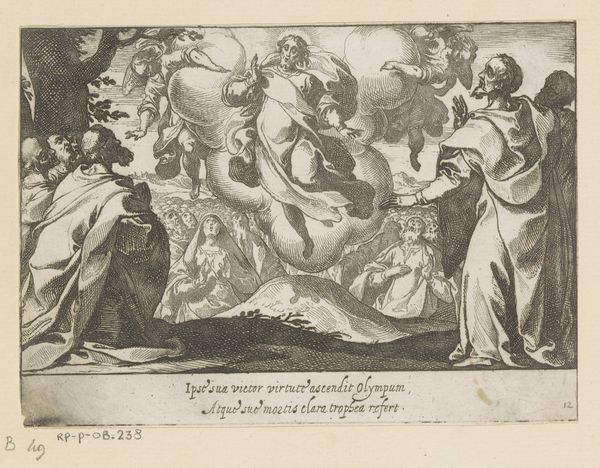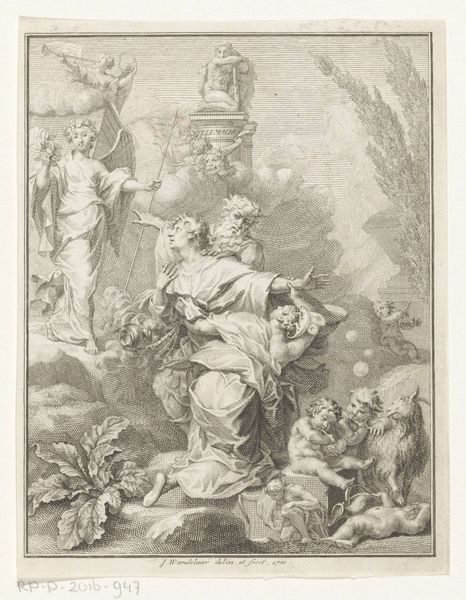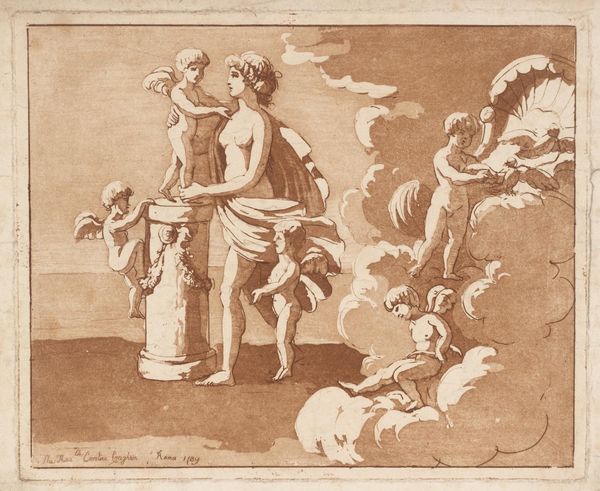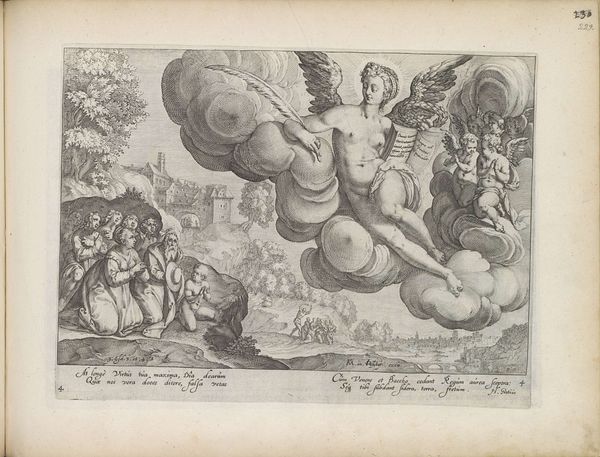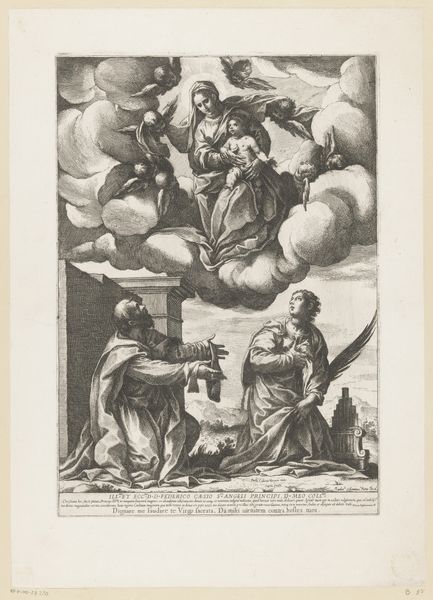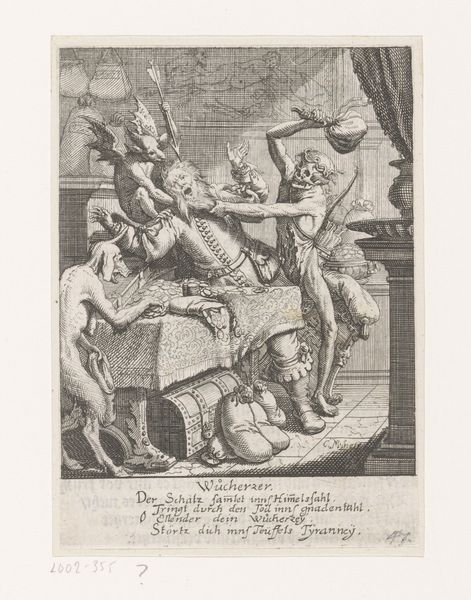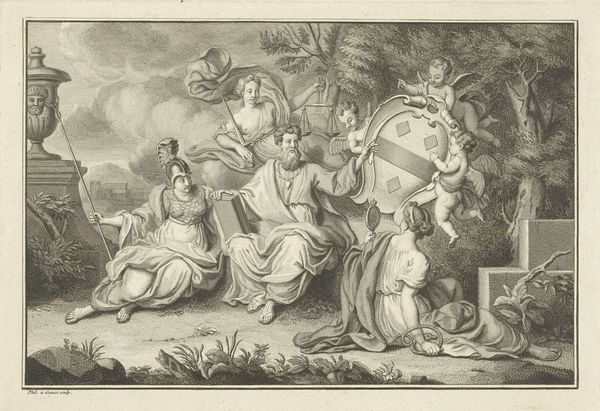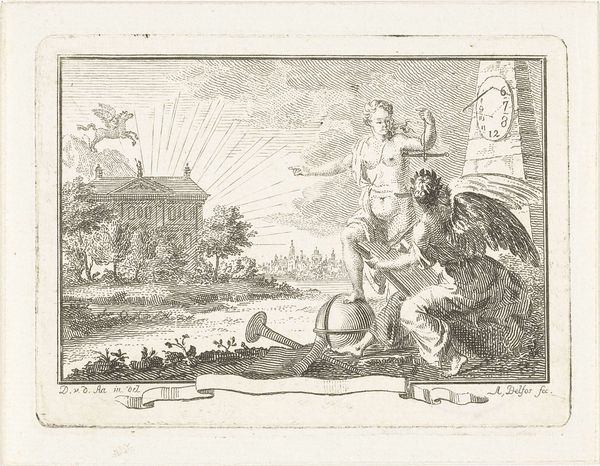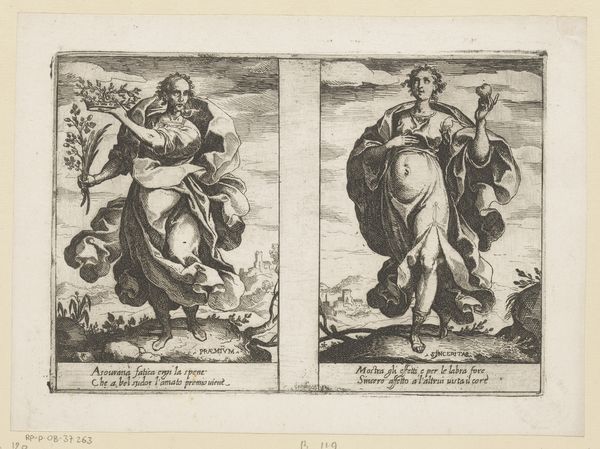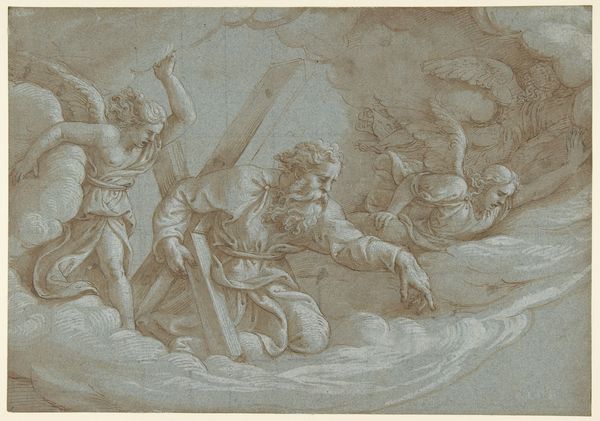
Plate 1: God Blessing on the Seventh Day, from Genesis Chapter 2, after a lost fresco in the basamento of Bay 1 of the Vatican Loggia 1650 - 1677
0:00
0:00
drawing, print, etching, engraving
#
drawing
#
allegory
#
baroque
# print
#
etching
#
figuration
#
history-painting
#
engraving
Dimensions: Sheet: 3 11/16 × 9 5/8 in. (9.3 × 24.5 cm) Plate: 3 3/8 × 9 1/4 in. (8.5 × 23.5 cm)
Copyright: Public Domain
Editor: Here we have Pietro Santi Bartoli's "Plate 1: God Blessing on the Seventh Day, from Genesis Chapter 2, after a lost fresco in the basamento of Bay 1 of the Vatican Loggia," created sometime between 1650 and 1677, using engraving and etching. I'm struck by the contrast between the soft, flowing forms and the sharp, precise lines of the engraving. What's your take on this work? Curator: As a materialist, I am drawn to understanding the historical and cultural context surrounding Bartoli's work. Consider the printmaking process: the labour involved in creating the copper plate, the repetitive act of printing, and the circulation of these images within society. It takes religious high art, reproduces it, and puts it in the hands of a broader, potentially more diverse, audience. How do you think that reproducibility affects the meaning and consumption of the work? Editor: That’s fascinating! I never considered the impact of mass production on the image's meaning. It democratizes access, but perhaps also cheapens the original concept? Curator: Precisely! We must also acknowledge the skill and the "hand" of the artisan that lies at the foundation of mechanical production. Moreover, this engraving exists “after” a fresco, calling our attention to what is lost and what is gained by tracing back to its historical precedent. We must reflect on how artistic traditions and techniques from fresco painting informed Bartoli's work, while also attending to the new economies of distribution afforded by printed images. Editor: So, it's not just about the image itself, but also about the means of its production and consumption within its historical moment. Curator: Absolutely. The engraving itself becomes a commodity, a tangible object circulating in a market, with its own material presence and social life. Do you notice the subtle, almost ornamental, placement of the latin description along the lower edge? It becomes like a maker's mark. Editor: I see what you mean. I appreciate gaining a new perspective on considering the art object's production and distribution beyond just its aesthetic value. Curator: Exactly! It forces us to think critically about value – artistic, economic, and social – within the context of its creation.
Comments
No comments
Be the first to comment and join the conversation on the ultimate creative platform.
